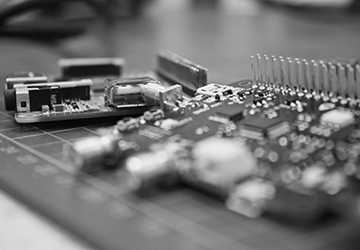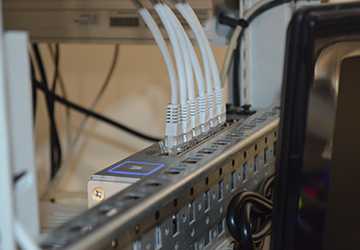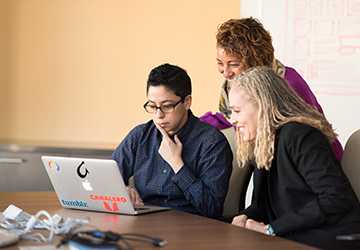The Internet of Things (IoT) is a transformative technology reshaping how we live, work, and interact with the world around us. Whether you're a tech enthusiast or someone new to the concept, IoT for beginners can be an exciting journey into connected devices and intelligent systems. In this guide, we will explore the basics of IoT and provide you with a roadmap to start your IoT adventure.
Understanding IoT: What Is It?
At its core, the Internet of Things refers to the interconnectedness of everyday objects and devices through the Internet. These objects range from your smartphone and smart home appliances to industrial machines and environmental sensors. The key concept is that these devices can collect and exchange data, making them "smart" and capable of making decisions or performing actions without human intervention.

The Building Blocks of IoT
To grasp IoT basics, it's essential to understand the fundamental components that make it work:
1. Devices and Sensors: These physical objects or sensors collect data from the real world. They serve as the eyes and ears of IoT systems, capturing environmental information. These devices encompass various technologies, including temperature sensors, cameras, wearable devices like fitness trackers, and other sensors designed for specific purposes. For instance, environmental sensors can measure air quality or humidity, while cameras can capture images and videos for surveillance or analysis.
2. Connectivity: Devices need communication to share the data they collect. Connectivity options for IoT devices can be categorized into wired and wireless solutions. Wired connections, such as Ethernet, offer reliability and consistent data transfer. Wireless technologies like Wi-Fi, Bluetooth, and cellular networks provide mobile and remote applications flexibility. These connectivity options enable IoT devices to transmit data to other devices or central data processing systems.
3. Data Processing: Once IoT devices collect data, it must be processed to extract valuable insights. This processing can occur in two primary locations: locally on the device itself or in the cloud. Local processing is often used for real-time decision-making or data reduction to minimize the data sent over the network. In contrast, cloud-based data processing leverages remote servers' computational power and storage capabilities to analyze data, generate reports, and make long-term predictions.
4. Cloud Computing: Cloud computing is a vital component of IoT infrastructure. It provides a scalable and flexible platform for storing and processing the vast amounts of data IoT devices generate. Cloud services enable organizations to access data from anywhere, implement advanced analytics, and manage devices remotely. This scalability ensures IoT solutions can accommodate growing data volumes and changing requirements.
5. User Interface: User interfaces are crucial for end-users to interact with IoT devices and systems. These interfaces can take various forms, such as smartphone apps, web dashboards, or dedicated control panels. Through user interfaces, individuals can monitor the status of IoT devices, control their actions, and visualize data. User-friendly interfaces enhance the accessibility and usability of IoT solutions, making them more approachable to a broader audience.
IoT Use Cases
IoT has found applications in various industries and daily life. Here are some examples to illustrate its versatility:
Smart Homes
One of the most accessible IoT use cases is smart homes. You can control your thermostat, lights, security cameras, and even your refrigerator through your smartphone. These devices can learn your preferences and optimize energy usage.
Healthcare
IoT devices like wearable fitness trackers and remote patient monitoring systems have revolutionized the healthcare industry. They enable real-time health data tracking and early disease detection.
Agriculture
Farmers use IoT for soil monitoring, weather forecasting, and precision agriculture. Sensors in the field collect data to optimize crop yields and reduce resource waste.
Industrial IoT (IIoT)
Industrial IoT involves connecting machines and equipment in manufacturing and logistics. This leads to predictive maintenance, improved efficiency, and reduced downtime.

Getting Started with IoT
Now that you have a grasp of IoT basics, here are steps to start your journey:
1.Learn the Fundamentals
Begin with online courses or books that provide an introduction to IoT. Understanding the basic concepts and terminology is crucial.
2.Choose Your Hardware
Decide what type of IoT projects interest you. You can start with a Raspberry Pi or Arduino board, which are famous for DIY IoT enthusiasts.
3.Get Hands-On
Start with simple projects like creating a temperature sensor or controlling a light bulb remotely. There are plenty of online tutorials and communities to support your learning.
4.Explore IoT Platforms
Familiarize yourself with IoT platforms like AWS IoT, Google Cloud IoT, or Microsoft Azure IoT. These platforms simplify device management and data processing.
5.Security Matters
IoT security is a critical aspect. Learn about encryption, authentication, and best practices to protect your devices and data.
6.Join IoT Communities
Connect with IoT communities and forums. Sharing experiences and asking questions can be immensely helpful as you progress.
7.Build Your IoT Project
Once you feel confident, start working on your IoT project. It could be a home automation system, a weather station, or anything that aligns with your interests.
Challenges and Considerations
While IoT offers immense potential, it also comes with challenges:
Security Risks
Connected devices can be vulnerable to hacking and data breaches. Implement robust security measures to protect your devices and data.
Compatibility
Ensuring that different devices and platforms can work together seamlessly can be challenging. Standardization efforts are ongoing to address this issue.
Conclusion
As you delve into IoT for beginners, remember that this technology continually evolves. The future promises even more innovation and integration of IoT into our daily lives. Embrace the learning process, stay curious, and be part of the exciting world of the Internet of Things.
In conclusion, getting started with IoT can be something other than an advanced technical background. With a curious mindset and the right resources, you can embark on a rewarding journey into connected devices and intelligent systems. Whether you're interested in smart homes, healthcare, agriculture, or industrial applications, IoT offers endless possibilities for innovation and problem-solving. So, take the first step and explore the exciting world of IoT today!













